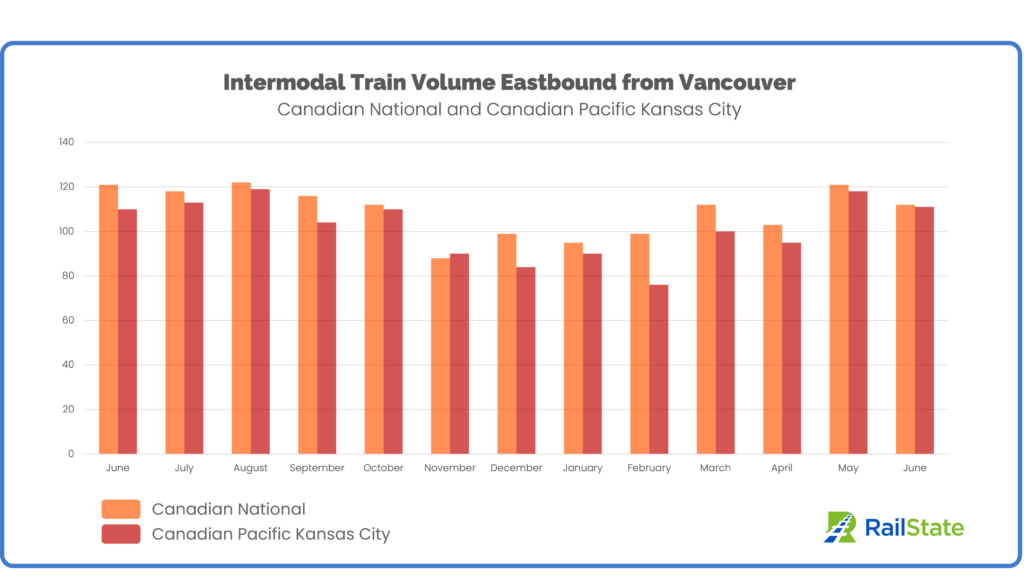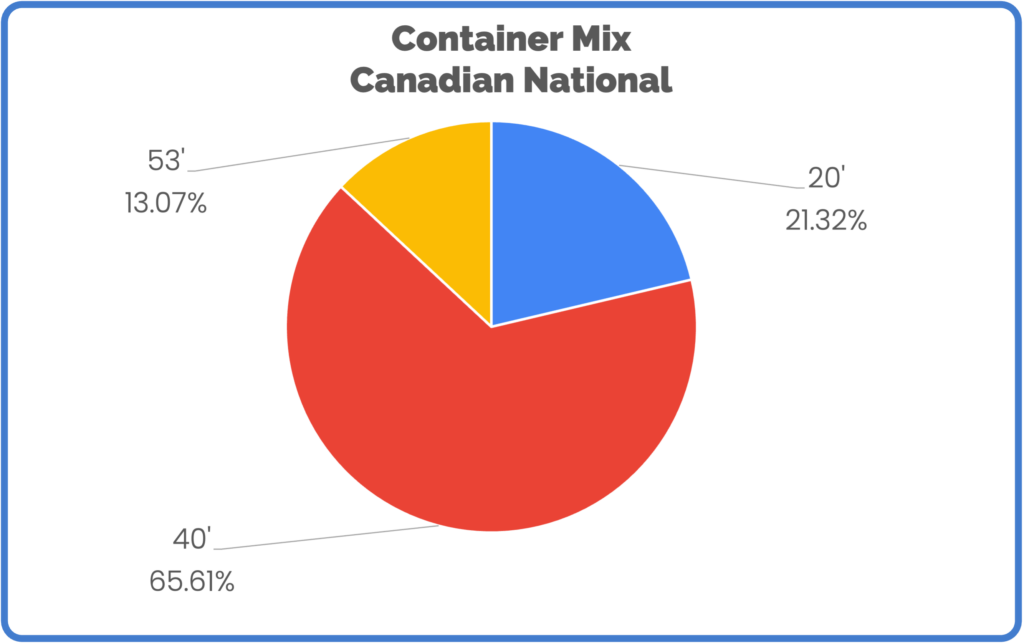
RailState, the rail industry’s only provider of real-time rail network visibility, independently tracks all freight rail movements across Canada in real-time.
June saw 63,523 containers enter through the western Canada ports. This is a drop of 5.27% of total container volume from May and 12.6% lower volume than June 2022. Average daily volume was 2,117 containers per day. While June volume was lower than volume in May, it remained above container volume seen in October 2022 through April 2023.
This June drop in volume was not felt equally by the two main carriers. Volume on CPKC increased in May and that trend continued into June. Average daily volume on CPKC was up 4.16% in June to 1,102 containers per day. This is the highest volume on CPKC since August 2022.
Intermodal traffic on CN showed a different story in June. Total volume was down 11.1% from May and average daily volume is 1,016 containers per day, a drop of 8.10% from last month.
This is the first month since July 2022 that CPKC carried more intermodal traffic than CN.
Differences Between Railways
CPKC
CPKC is running a consistent number of trains in June as it did in May, at a pace of just under 4 trains per day. These trains are carrying more in June, however. CPKC trains are carrying an average of 298 containers per train in June. In May, these trains averaged 20 fewer containers per train.

CN
CN trains averaged 272 containers per train in June. This is a 3.9% drop in containers per train from May. This is similar to the lower volume seen in the winter, and 18% below the peak volume of 329 containers per train in June of last year.

Container Sizes
CPKC
In addition to carrying a higher number of containers in June, CPKC also carried larger containers. The larger 53-foot containers account for 18.6% of CPKC’s volume. In May, 16.1% of containers on CPKC trains were these large containers.

CN
CN also carries a slightly larger percentage of 53-foot containers in June, 13.1% in June compared to 12% in May. The standard 40-foot containers still account for the vast majority of volume but CN does skew more to the shorter 20-foot containers, which account for 21.3% of traffic on CN.

Categories
- AI (16)
- BNSF (19)
- Canadian National (32)
- CPKC (30)
- Freight Rail (165)
- Intermodal (1)
- Logistics (128)
- RailState (165)
- Technology (16)
- Uncategorized (3)
- Union Pacific (15)
Copyright © 2025
RailState LLC


